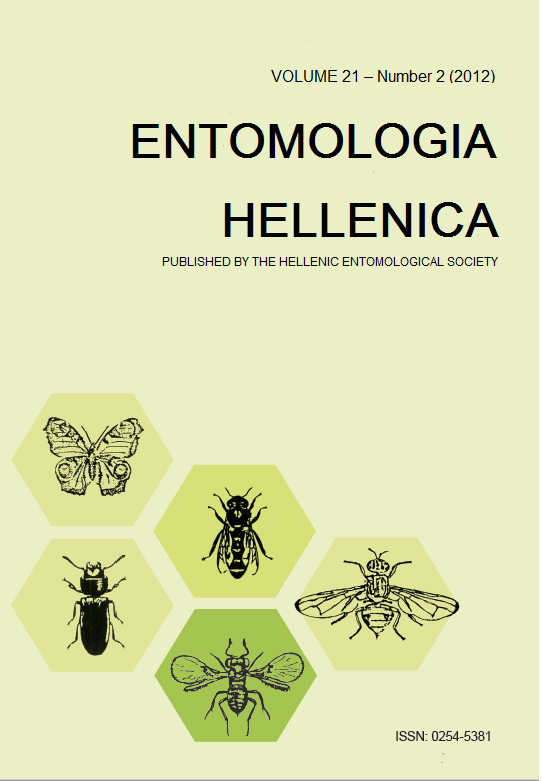The tabanid fauna (Diptera: Tabanidae) of the Chirpan Eminences (Bulgaria)

Abstract
The study of the Chirpan Eminences tabanid fauna was completed by means of a route collection in 2008 and regular monthly collections from two localities during the active tabanid sea-sons in years 2010-2011. The research resulted in the capturing of 1202 tabanid specimens, 1124 of them were females and 78 males. Within this collected sample 24 species and subspecies from 8 genera were determined: Chrysops (2 species), Atylotus (1 species), Therioplectes (1 species and 1 subspecies), Hybomitra (3 species), Tabanus (12 species and 1 subspecies), Haematopota (1 species), Dasyrhamphis (1 species) and Philipomyia (1 species). On the basis of literary data and of the species identified in this research, it may be asserted that the tabanid fauna in the Chirpan Eminences is represented by 28 species. Thirteen of them were identified for the first time for this region. From a zoogeographical point of view, predominant for the tabanid fauna of the Chirpan Eminences are the elements of the Mediterranean subregional fauna (64.29 % of the species).
Article Details
- How to Cite
-
Ganeva, D., & Kalmushka, M. (2012). The tabanid fauna (Diptera: Tabanidae) of the Chirpan Eminences (Bulgaria). ENTOMOLOGIA HELLENICA, 21(2), 45–53. https://doi.org/10.12681/eh.11517
- Issue
- Vol. 21 No. 2 (2012)
- Section
- Articles

This work is licensed under a Creative Commons Attribution-NonCommercial-ShareAlike 4.0 International License.
Authors who publish with this journal agree to the following terms:
Authors retain copyright and grant the journal right of first publication with the work simultaneously licensed under a Creative Commons 4.0 license.
Authors are able to enter into separate, additional contractual arrangements for the non-exclusive distribution of the journal's published version of the work (e.g. post it to an institutional repository or publish it in a book), with an acknowledgement of its initial publication in this journal. Authors are permitted and encouraged to post their work online (preferably in institutional repositories or on their website) prior to and during the submission process, as it can lead to productive exchanges, as well as earlier and greater citation of published work.


